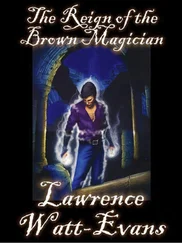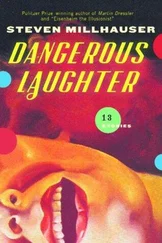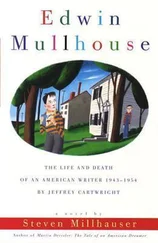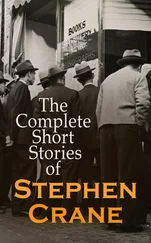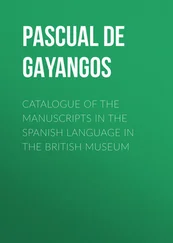Down, down, down. Would the fall never come to an end? Alice has been falling for so long that she is beginning to grow uncertain. If the fall does end, then the vertical tunnel will be a connecting link, a transition, a bridge between the upper world and the unknown lower world; it will be unimportant in itself and, at the instant of ending, it will disappear. But if the fall never ends, then everything is changed: the fall itself becomes the adventure, and the tunnel through which she is falling becomes the unknown world, with its magic and mystery. Alice, looking about uncertainly, tries to decide whether she is on her way to an adventure or whether she is in the middle of one.
The shaft, well, or vertical tunnel down which Alice is falling has irregular walls of hard earth mixed with outcroppings of rock: granite, feldspar, and basalt. The hard earth is mostly dry, with occasional moist patches; here and there a trickle of dark water zigzags down, passing the edge of a map, slipping behind a cupboard’s open door. Some of the cupboards have small dishes on top, placed back against the wall, as if to catch dripping water. The tunnel is a comfortable width for falling: Alice falls without fear of striking the walls, yet at any moment she can reach out and remove a jar from a shelf or adjust a tilted picture. Alice wonders how the shelves are reached from below. At first she imagines a very long ladder, but this presents difficulties even if the tunnel has a bottom, for how would such a long ladder get into such a narrow space? Next she imagines small openings in the walls, through which servants can enter the tunnel, but she sees no openings, no doors. Perhaps the answer is small birds who fly up from below, or from nests hidden in the darkness. It occurs to Alice that there may be another answer: the jars, the pictures, the maps, the lamps have always been here, unchanging. But how can that be? Alice, as she falls, feels a little frown creasing her forehead.
Falling, always falling, Alice closes her eyes and sees her sister on the bank under a tree, reading a book without pictures or conversations. The bank slopes down to a pool with reeds; the sun-shot shadow of the tree, a thick beech ( Fagus sylvatica ), trembles on the water. Circles of sun and shade move on her sister’s hands. Deep in her book, Alice’s sister scarcely hears the stir of leaves overhead, the distant cries of the shepherd boy, the lowing of the cattle, the rustle of Alice’s dress. Gradually she becomes aware of a disturbance beside her; it is Alice, restless as always. It’s difficult, thinks Alice’s sister, to have a younger sister who won’t ever sit still and let you read. Although Alice’s sister is determined to keep her eyes fixed on the page, she feels that her attention has already been tugged away, it’s as if she is being pulled out of a dream, the words are nothing but words now; irritably she places her finger at the end of a line. Raising her eyes, she is surprised to see Alice chasing a white rabbit across a field. With an impatient sigh, Alice’s sister reaches into her pinafore pocket and removes a scrap of blue ribbon, which she places in her book before closing it. She rests the book carefully against a bare root. She then rises to her feet, brushing off her dress with sharp little flicks of the backs of her fingers, and begins to walk quickly after Alice through the field of daisies. When she comes to the rabbit hole under the hedge she stops and crouches down, pushing away the hedge branches, careful not to kneel on the ground. “Alice!” she calls, looking down into the dark hole. “Alice, are you there?” There is no answer. The hole is just large enough for her to enter, but it is very dirty, and very dark. For a while she looks down thoughtfully into the dark. Then she raises her head; in the distance she hears the tinkle of sheep bells; the sun burns down on the tall grass; reeds stir at the edge of the pool; under the leaning beech, sun and shade tremble on the grass, on the closed book, on a purple wildflower beside the bare root.
Down, down, down. She can’t really see too much, down there in the dark. She can see the hem of her dress outspread by the wind of her slow falling, and the dark earthen wall of the vertical tunnel, broken here and there by eruptions of rock. The upper view is better, but it makes Alice dizzy: raising her eyes, and bending back her head, she can see the ocher bottom of a cupboard, and higher up, on the other side of the wall, the shadowy underside of a bookshelf supported by two wooden brackets shaped like elephant heads with uplifted trunks. Still higher up she sees a dim glow passing into upper darkness; the glow is from a lamp concealed by the cupboard. When Alice looks down again, she sees the top of a new object rising into view: a strip of dark wood carved with wooden leaves and wooden bunches of grapes. Beneath the strip of carved wood a glimmering mirror appears. Alice sees, at the top of the glass, her shiny black shoes with their narrow black ankle-straps and the bottoms of her blue stockings. The large mirror in its heavy frame of carved mahogany is shaped like a shield. In the dim glass Alice sees, as she falls, the outspread hem of her yellow dress, and then the bottom of her white pinafore with its blue stripe along the bottom border, and then the two pinafore pockets, each with a blue stripe along the top: one pocket holds a white handkerchief. And as if she is standing at the side of a stairway, watching someone appear at the high landing and start to descend, Alice sees in slow succession the white cotton belt, the puffed shoulder sleeves, the outspread yellow-brown hair, the dark, worried eyes under the dark eyebrows, the tense forehead; and already the shiny black shoes and blue stockings and pinafore pockets have disappeared, the bottom of the mirror is rising higher and higher, all at once the top of her head with its thick combed-back hair vanishes from view: and looking up she sees the bottom of the mirror rising higher and higher, floating away, slowly dissolving in the dark.
If only, Alice thinks to herself suddenly, I could let myself go! If only I could fall! For she feels, in her falling, a tension, as if she is holding herself taut against her fall. But a true fall, Alice thinks to herself, is nothing like this: it’s a swoon, a release, it’s like tugging at a drawer that suddenly comes unstuck. Alice, as she falls, is tense with alertness: she holds herself in readiness, though for what she isn’t certain, she looks around eagerly, she takes in everything with sharpened awareness. Her fall is the opposite of a sleep: she has never been so awake. But if I were truly falling, Alice thinks to herself, then I would let myself go, myself go, myself go.
It occurs to Alice that she’s of course dreaming. She has simply fallen asleep on the bank with her head in her sister’s lap. Soon she will wake up, and the tunnel, the cupboards, the maps, the mirror, the jar of raspberry jam, all will vanish away, leaving only the bank of sun-patched shade, the sunny field, the distant farmyard. But suppose, Alice thinks to herself, the bank too is a dream? If the bank is a dream, then she will wake up somewhere else. But where will that be? Alice tries to think where she might wake up, if she doesn’t wake up with her head in her sister’s lap. Maybe she will wake up in Lapland, or China. But if she wakes up in Lapland, or China, will she still be Alice, or will she be someone else? Alice tries to imagine another Alice, dreaming: the other Alice has short brown hair, likes rice pudding, and has a cat called Arabella. But mightn’t this Alice also be a dream? Who then is the dreamer? Alice imagines a series of Alices, each dreaming the other, stretching back and back, farther and farther, back and back and back and back and back.
On the afternoon of July 4, 1862, a boating party of five was to be seen on the Isis, heading upriver from Oxford to Godstow. It was a cloudless blue day. Heat-haze shimmered over the meadows on both sides of the water. Charles Lutwidge Dodgson, mathematical tutor at Christ Church, Oxford, and deacon of the Church of England, having changed from the black clergyman’s clothes he always wore in Oxford to white flannel trousers, black boots, and a white straw boater, sat facing the back of his friend Robinson Duckworth, who rowed stroke to Dodgson’s bow. In the stern, facing Duckworth, sat the three Liddell sisters, daughters of the Dean of Christ Church: Edith, age 8; Alice, age 10; and Lorina, age 13. The girls, seated on cushions, wore white cotton frocks, white socks, black shoes, and hats with brims. In the boat stood a kettle and a large basket full of cakes; on river expeditions Dodgson liked to stop and take tea in the shadow of a haycock. “The story was actually composed and spoken over my shoulder ,” Duckworth recalled some years later, “for the benefit of Alice Liddell, who was acting as ‘cox’ of our gig. I remember turning round and saying, ‘Dodgson, is this an extempore romance of yours?’ And he replied: ‘Yes, I’m inventing as we go along.’” Twenty-five years later Dodgson recalled: “I distinctly remember now, as I write, how, in a desperate attempt to strike out some new line of fairy-lore, I had sent my heroine straight down a rabbit-hole, to begin with, without the least idea what was to happen afterwards.” He remembered the stillness of that afternoon: the cloudless blue sky, the watery mirror of the river, the tinkle of drops falling from the oars. Mrs. Hargreaves — as Dodgson always referred to Alice, after her marriage — also recalled the day sharply: the blazing summer afternoon, the heat-haze shimmering over the meadows, the shadow cast by the haycocks near Godstow.
Читать дальше


